|
The land around Casole has been inhabited since ancient times. The
historical period which has left the greatest mark is the Middle Ages, which have defined
the urban planning of the
town centre by enclosing it in a circle of defensive walls.
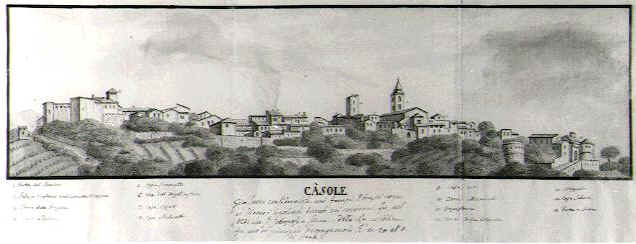
Picture by Ettore Romagnoli from
the first half of the 1800's. Since
the last war the construction of new buildings outside the town walls has
partly modified the Medioeval aspect of Casole.
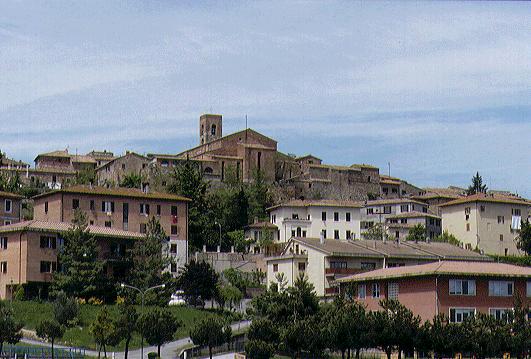
The
oldest part of Casole was surrounded by a system of defence with two entrances. One facing
towards the Val d'Elsa pass and other towards Radicondoli. Thus the town has taken on an
oblong shape.
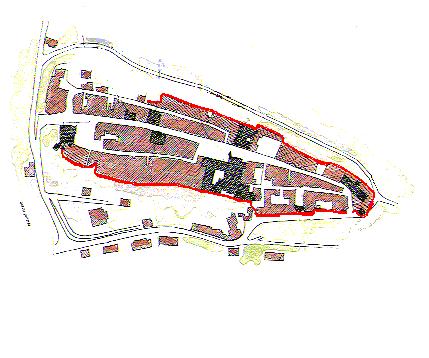
La
Rocca has been the centre of many acts of war. In 1553 it was further fortified to face
the imperial army of the Marquis of Marignano who was moving toward the conquest of
the republic of Siena. After a seige Casole surrendered in 1554.
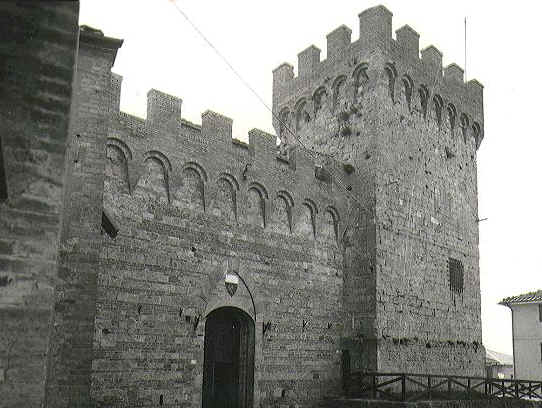
La
Rocca has undergone many changes. It has a massive quadrangular shape and a tower with
battlements on it's north-western side. Today the tower houses the town council.
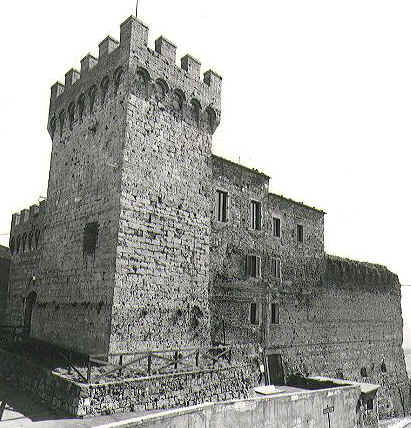
From La Rocca to the Rectory runs the street called Via Casolani
which
is full of interesting historical buildings .
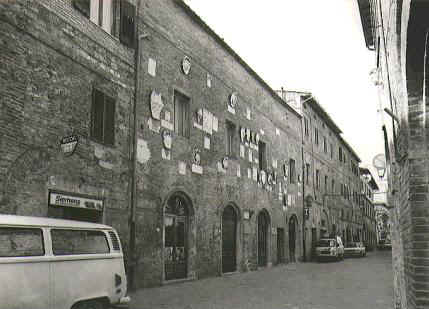
Proceeding
towards the square, "Piazza della LibertÓ" you will see
a private dwelling with typical mediaeval brick walls.
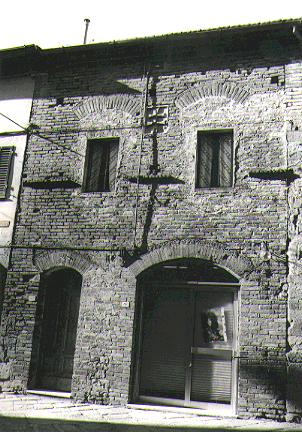
The lowered arches of the two portals at street level show elements
in brick
decorated with a herring bone pattern.
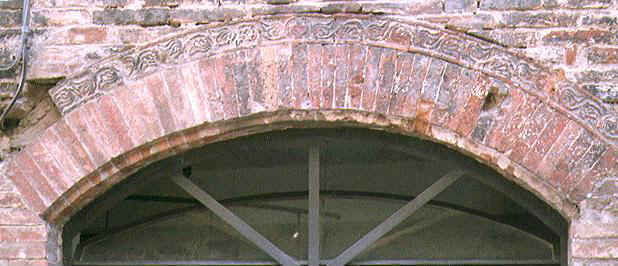
On
the face of the wall there is a coat of arms. Escutcheon of the order of the
"Ospitaliers" who held mass in the nearby gothic church of the Santo Spirito .
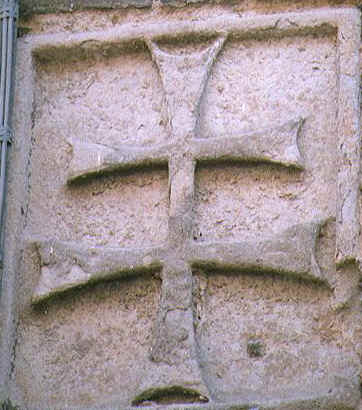
The
Pretorian palace, seat of power is easily distinguished from the surrounding buildings by
the number and variety of coats of arms and inscriptions which adorn the fašade of the
building.
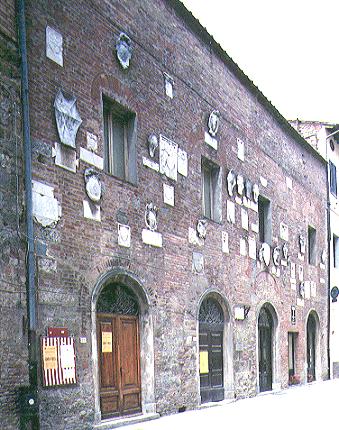
Further
along the road you come to a stone church notable for its gothic portals, the
church of the Santo Spirito, also known as the church of the Hospital.
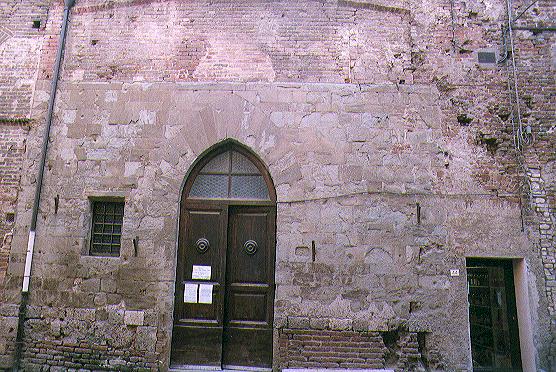
Then
there is the Palazzo Casolari. A renaissance building that fronts on to the street of
the same name and which has in its courtyard, a well with typically classical lines.
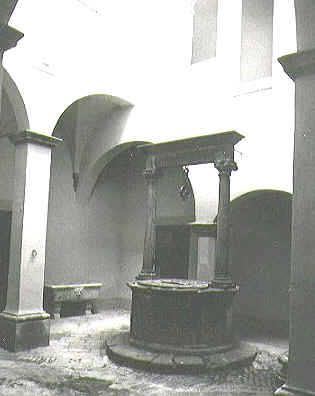
The
Piazza della LibertÓ is the centre of Casole. Here were built prestigious buildings like
the Collegiate church, the Rectory and other fine buildings like Palazzo Porrina.
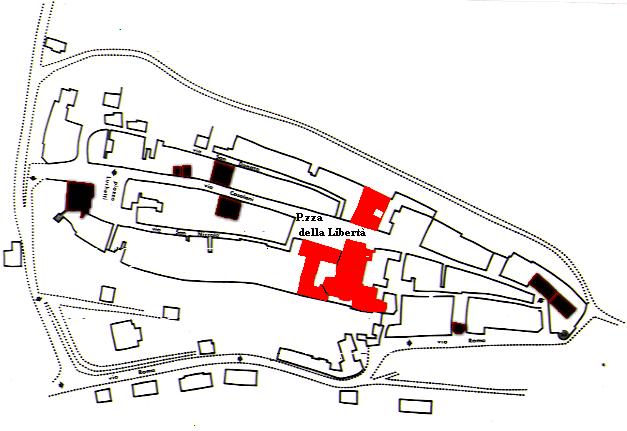
The
rooms on the first floor house the Collegiate museum.
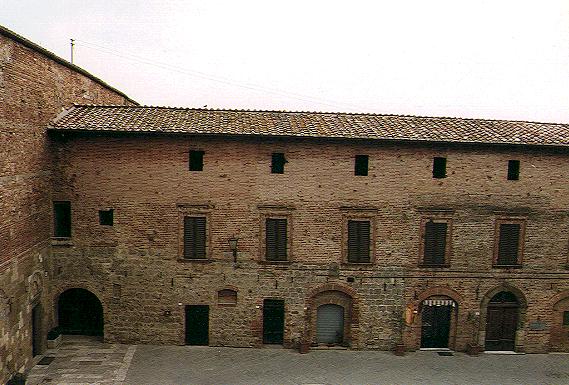
The
Cloisters which have also been extensively rebuilt extend on three sides of the Rectory
courtyard.
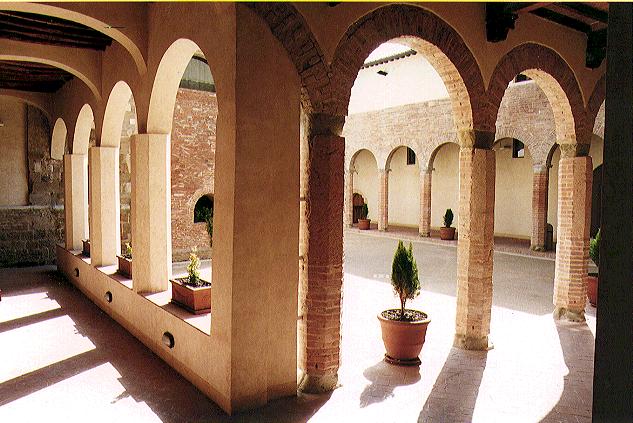
The
cloisters are interspersed with columns in brick with stone caps...
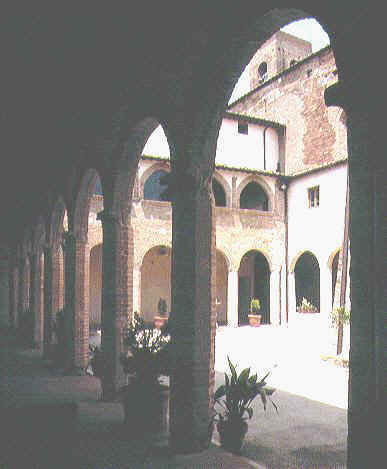
...There
is a gothic ogival arch in the western face of the upper floor.
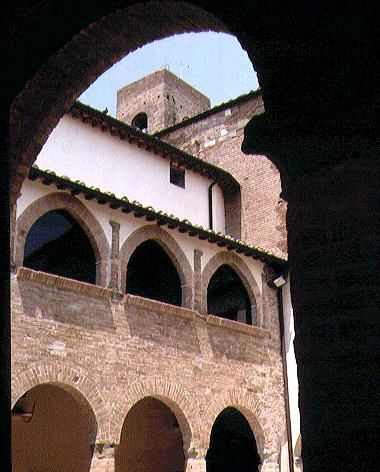
The
main church was rebuilt in the 12th.C..
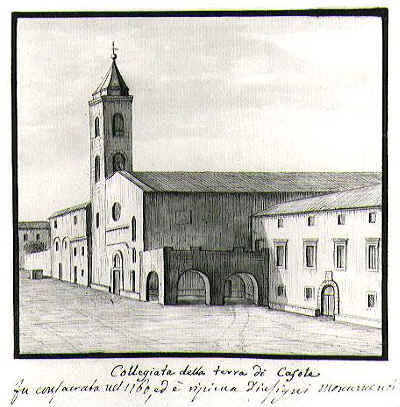
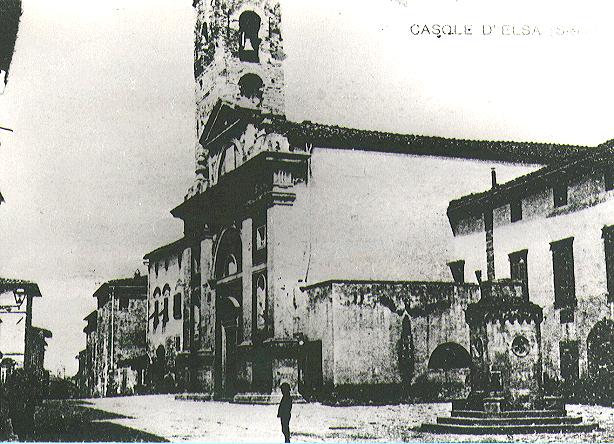
The
collegiate church of Santa Maria, despite notable transformations as a result of successive
rebuildings shows consistent evidence of the original Roman construction.
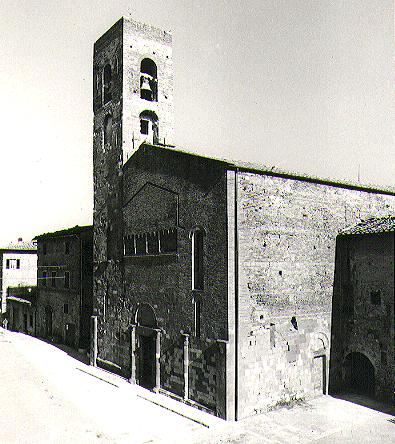
Today
the style of the church is Gothic. The arches of the chapels are ogival and the
roof is trussed with exposed wooden beams.
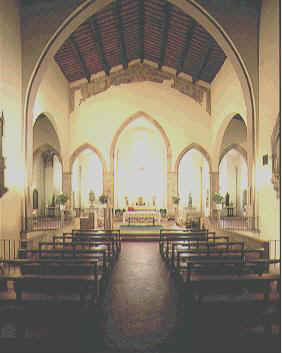
The
transept is divided in to quadrangular chapels. The central one is the largest.
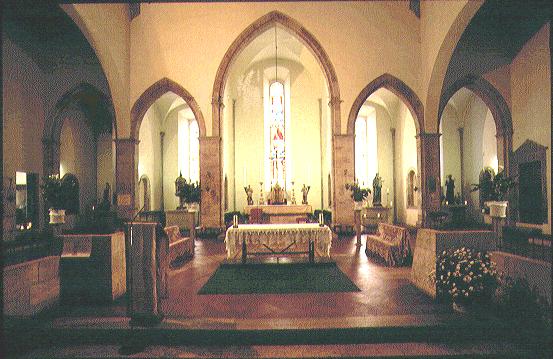
The date of the consacration of the Casole Parish Church is given on
a long inscription carved into a marble tabled which is
today built into the wall of the right wing of the transept.
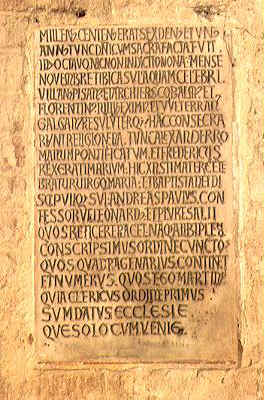
The consacration of the chapel took palce in 1161 and was carried out by Villano
Archbishop of Pisa, Di Giulio bishop of Firenze and finally by Galgano bishop of Volterra.
A
richly decorated Ciborium.
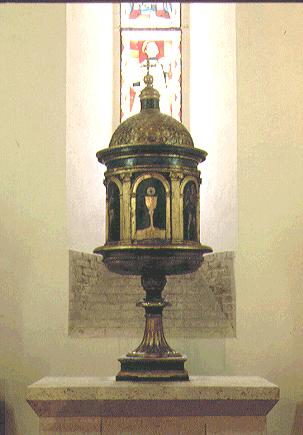
The
Collegiate chapel contains the funeral monuments of Beltramo Aringhieri known as the
Porrina.
The works was done by Marco Romano at the beginning of the 4th.C.
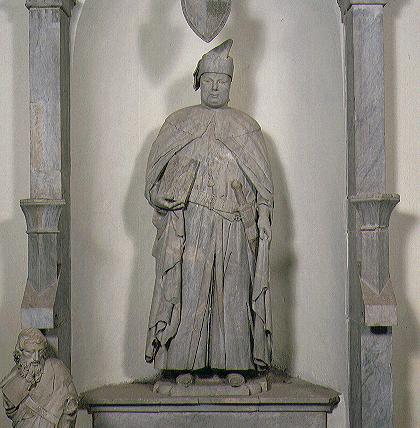
In
front of the collegiate chapel there stands the Palazzo Porrina built
in the 4th.C. which has a small internal courtyard.
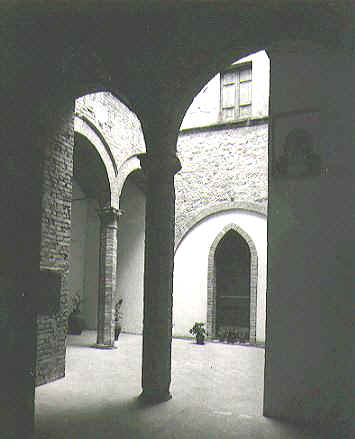
The
proportions of the courtyard hint at the beginnings of the Rennaissance.
The octagonal pillars are in brick with caps in Serena stone.
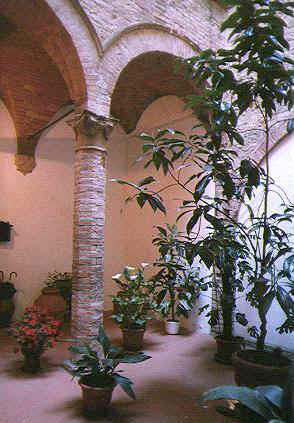
From
the Piazza della LibertÓ the via Nicol˛ Aringhieri heads
south until it arrives at the brothers gate.
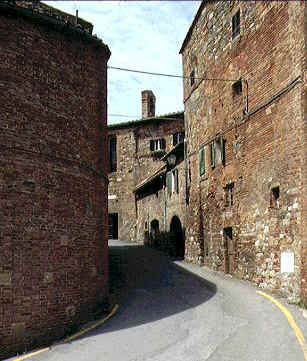
Travelling
towards the Porta ai Frati you come into a mediaeval house fortified with a tower.
The walls show traces of round arch doors which have been bricked up.
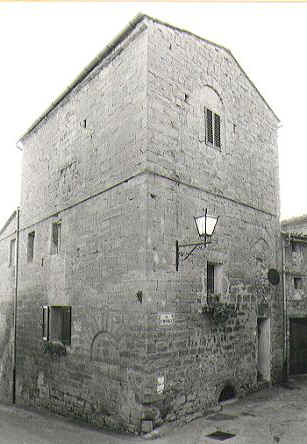
A
little further on you find the ruins of the San Pietro church attached to the Servite
monastery. Inside were kept some works of art which have since been transferred to
the Cathedral Museum.
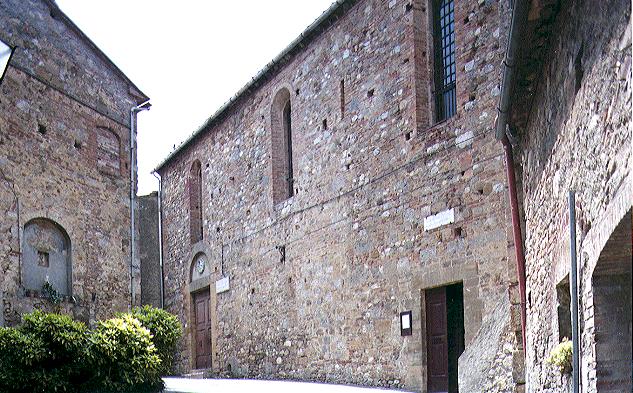
The
old monastry which gave it's name to the nearby gate has undergone many transformations.
Of the original structure you can still see two elegant open galleries one above the
other.
Many of the arches have been walled up.
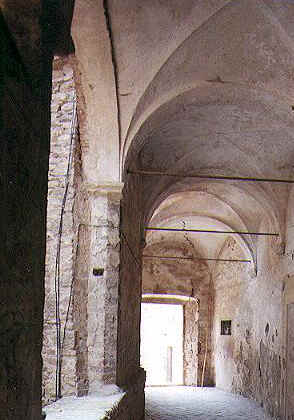
Back
to Menu |











































